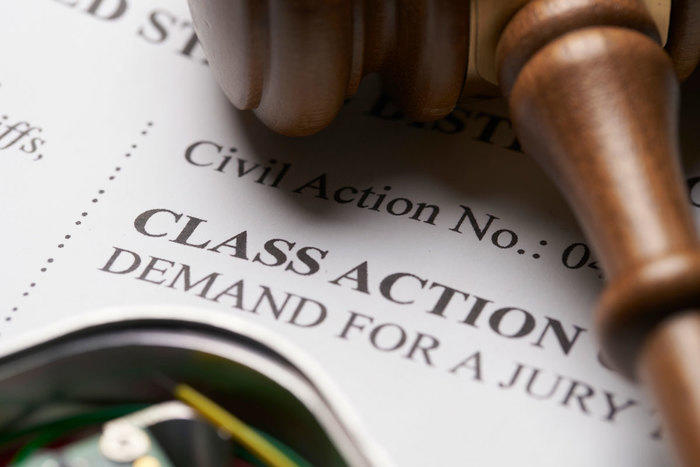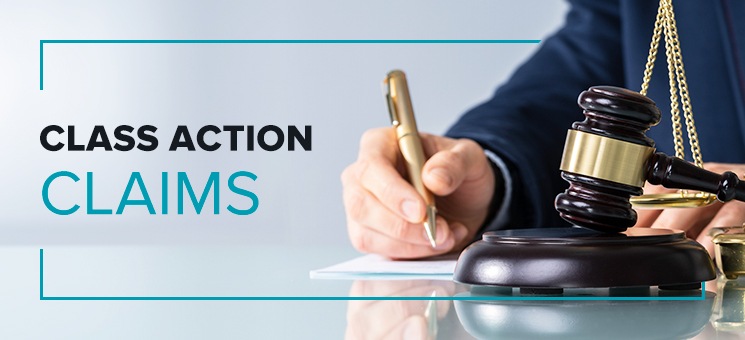Understanding Course Activity Legal Action: An Overview for Attorney
Course activity legal actions have actually come to be an integral part of the lawful landscape, permitting the consolidation of multiple claims right into a solitary action. For attorneys, understanding the complexities of class activity lawsuits is critical in properly representing their customers. This detailed guide explores the principles of course action suits, from identifying potential course participants to navigating the qualification process. In addition, it explores essential strategies for managing course action lawsuits and supplies insights right into bargaining and obtaining authorization for settlements. By diving into the intricacies of course action lawsuits, this overview equips legal representatives with the understanding and tools required to successfully browse this complex location of law.
The Fundamentals of Course Action Suits
Course action claims are a lawful mechanism utilized to settle similar cases from a group of individuals right into a single claim, offering a efficient and cost-efficient technique to seeking justice and resolution. This kind of lawsuit allows a depictive plaintiff, acting on part of the whole class, to bring an insurance claim against an accused who has supposedly created harm or breached the legal rights of several people.
The fundamental needs for bringing a class activity lawsuit consist of numerosity, commonness, typicality, and adequacy of representation. Numerosity refers to the truth that the course have to be so huge that joinder of all members would be impractical.
Course action legal actions can be useful for both complainants and offenders. For complainants, it enables them to pool their sources and share the threats and costs linked with lawsuits. When they are up against huge companies or entities, it additionally supplies a level having fun field. For accuseds, it offers the possibility to efficiently resolve numerous claims in a solitary lawsuit, preventing the need to prevent many specific claims.
Identifying and Assessing Prospective Course Participants
After developing the basic demands for a course activity lawsuit, the next step is to recognize and assess prospective course participants. If they satisfy the needed standards., this procedure involves determining who may be part of the class and assessing their insurance claims to figure out.
To recognize possible course participants, legal representatives usually carry out considerable research and gather relevant information. This might entail assessing records, performing meetings, and checking out documents to recognize people or entities that may have been affected by the alleged wrongdoing. It is essential to establish a comprehensive and clear list of possible course participants to guarantee that all affected parties are consisted of in the legal action.
When potential course members have actually been determined, the next action is to examine their claims. This entails examining the advantages of each individual insurance claim to identify if they fulfill the legal needs for class certification. Legal representatives should carefully examine the facts, proof, and lawful concepts of each potential course member's case to ensure that they have a sensible situation.
Assessing prospective course members likewise entails identifying whether they fulfill the class meaning and have actually endured similar damage as an outcome of the defendant's actions. This needs comparing the realities and circumstances of each potential class participant's scenario to the accusations and legal concepts presented in the lawsuit.
Navigating the Course Qualification Process
To successfully navigate the course qualification procedure, lawyers should carefully comply with the step-by-step requirements stated by the court. Class accreditation is an essential step in a class action claim, as it figures out whether an instance can continue as a course activity, standing for a team of people that have comparable insurance claims versus an offender. The procedure includes pleasing certain standards, such as numerosity, commonness, typicality, and competence of depiction.
To start with, legal representatives have to develop numerosity by showing that the course is so huge that specific joinder is impractical. This can be achieved through evidence or expert testament. They should establish commonality by revealing that there are typical concerns of law or fact that predominate over specific concerns. This needs a detailed analysis of the claims and defenses included.
Following, attorneys must reveal typicality, which implies that the depictive plaintiff's claims are regular of the insurance claims of the class participants. This makes sure that the interests of the depictive plaintiff align with the passions of the class. Last but not least, legal representatives should demonstrate competence of representation, meaning that the depictive plaintiff and their advise will relatively and appropriately stand for the rate of interests of the class.
To navigate this procedure successfully, legal representatives should extensively prepare by conducting substantial research, gathering evidence, and creating a compelling debate that satisfies each of these requirements. They should additionally be prepared to respond to any challenges or objections raised by the accused. By faithfully adhering to the procedural demands stated by the court, legal representatives can increase their possibilities of acquiring course qualification and advancing the passions of the class members.

Key Approaches for Managing Course Action Litigation
Upon successfully navigating the course accreditation procedure, pop over here attorneys must after that execute vital methods for effectively handling course action lawsuits. These strategies are critical to guarantee that the instance continues smoothly and effectively, eventually making the most of the possibilities of a desirable outcome for the class participants.
One trick technique is to develop a cohesive and strong legal group (Class action lawsuit). This entails assembling a team of lawyers with experience in class action lawsuits, along with other appropriate locations such as the specific industry or subject included in the instance. A versatile team can bring different perspectives and skills to the table, improving the total efficiency of the lawsuits
One more essential strategy is to establish a comprehensive and well-thought-out lawsuits plan. This strategy needs to lay out the total purposes of the situation, in addition to the specific legal concepts and debates that will certainly more tips here be gone after. It ought to also consist of a timeline and spending plan to make sure that the instance stays on track and within the designated sources.
In addition, legal representatives must actively involve with the course members throughout the litigation procedure (Class action lawsuit). This includes providing normal updates on the development of the case, looking for input and comments from the class participants, and attending to any questions or problems they may have. By fostering open interaction and partnership, lawyers can develop count on and assistance among the course members, which can be crucial in accomplishing a successful resolution
Resolving Class Activity Claims: Negotiation and Authorization
When it comes to clearing up class activity lawsuits, efficient negotiation and getting approval are essential actions in accomplishing a resolution. Course activity lawsuits are intricate and include a large number of complainants, making it crucial to get to a negotiation that is adequate and fair to all events included.

When a settlement arrangement is reached, it needs to be authorized by the court. The court's function in this procedure is to make certain that the negotiation is fair, sensible, and appropriately protects the passions of the class members. The court will certainly take into consideration variables such as the nature of the claims, the toughness of the proof, the prospective recovery for the course participants, and any kind of arguments raised by class members.
Acquiring court approval is crucial as it supplies finality to the settlement and safeguards the interests of the class members. It guarantees that the negotiation is binding and enforceable, and course participants can receive their rightful settlement.
Conclusion

Course activity claims have come to be an important part of the lawful landscape, enabling for the combination of multiple insurance claims into a solitary action. Course certification is a critical action in a class activity lawsuit, as it figures out whether a case can continue as a class activity, standing for a group of people who have similar cases versus an accused. By faithfully adhering to the step-by-step requirements established forth by the court, lawyers can boost their chances of acquiring course certification and progressing the interests of the class participants.
The court will think about variables such as the nature of the insurance claims, the toughness of the evidence, the possible healing for the class members, and any kind of objections increased by course participants.
By identifying and examining possible class members, attorneys can establish the viability of a class action legal Read Full Report action.